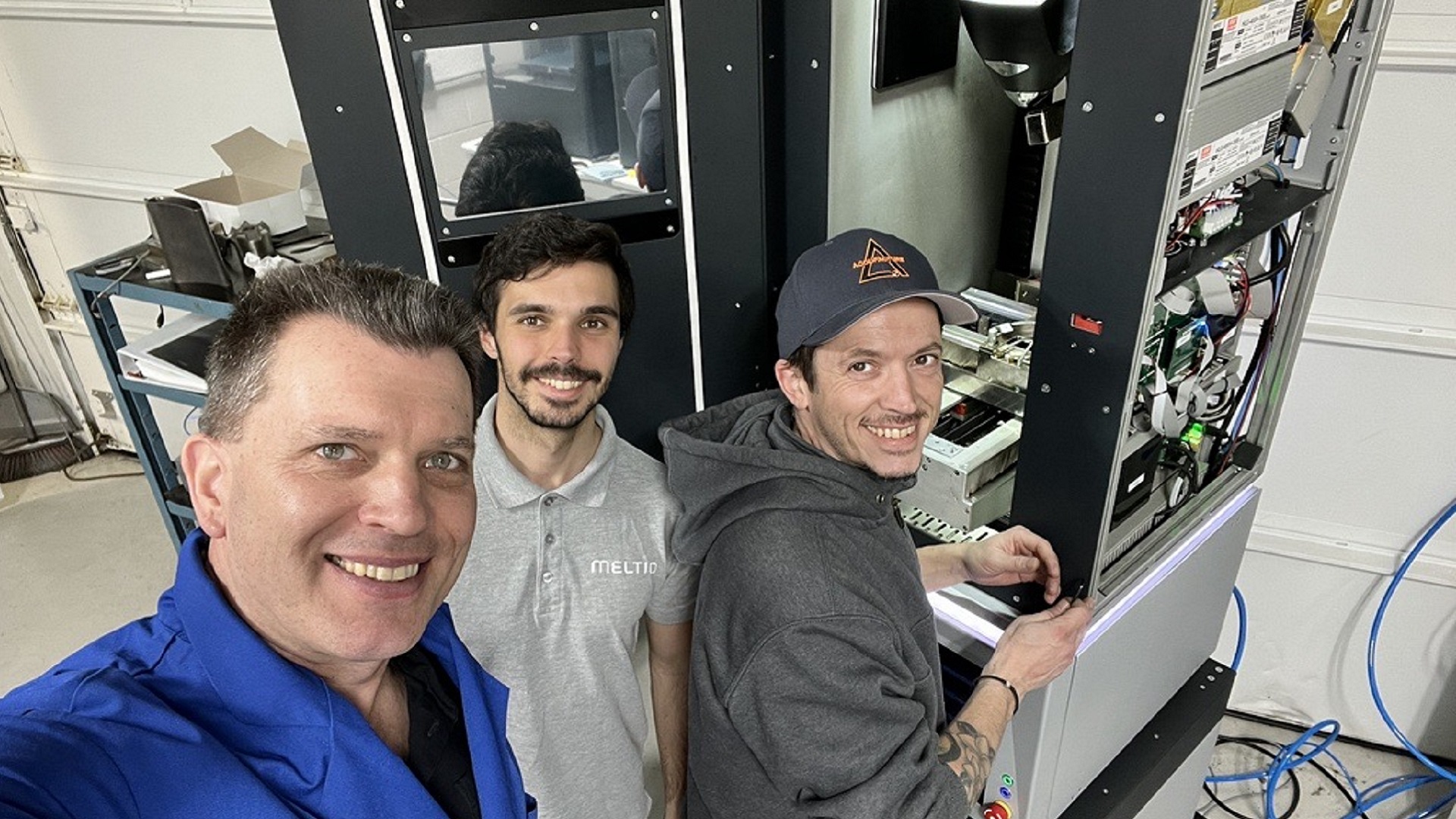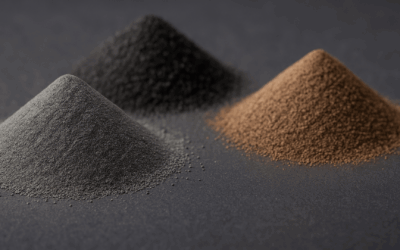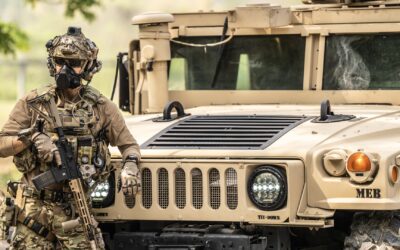After spending a large portion of his career working in Europe’s injection molding and powder metallurgy industries, Qualified 3D founder Pierre Viaud-Murat took a leap of faith into the U.S. additive manufacturing industry in 2019. Four years later, his Southfield-based additive manufacturing company, Qualified 3D, facilitates the adoption of AM in large and small applications, from local machine shops to the International Space Station.
“I love this region,” Viaud-Murat said. “There are great opportunities in manufacturing and the people are open to collaboration and kind.”
In 2022, MEDC’s Industry 4.0 Implementation grant program awarded Qualified 3D with $25,000 to further its mission as a printing services, software and equipment vendor in additive manufacturing.
Viaud-Murat used this funding to help purchase a metal laser-wire 3D printer from Meltio, a Spain-based metal additive manufacturing company. The new machine, printing in metals as diverse stainless steel, titanium and nickel alloys, creates high-quality parts with commonly available welding wire spools. It also requires much less environmental control and specialization in comparison to other metal 3D printers.
Automation Alley sat down with Viaud-Murat to discuss Qualified 3D, the additive manufacturing climate between the U.S. and Europe, and how Qualified 3D took advantage of an I4.0 Implementation Grant to achieve its goals.
You spent a significant time of your career in injection molding. What was the catalyst that made you change industries into 3D printing and create Qualified 3D?
There were several reasons why I changed industries: I saw companies specialized in rapid manufacturing use conventional technologies (machining, injection molding) for production parts and ignore additive manufacturing except for prototypes. So there was an opportunity to develop 3D printing services for functional parts using qualified materials, hence the name Qualified 3D.
What were some challenges in breaking off and starting your own company?
There are so many personal challenges when you have always worked in large companies with plenty of internal resources available for finance, legal, HR and marketing. When you start your own company, you are alone. I’ve been able to get these things done with help, but it’s tough and I’m still working on it.
What is something that excites you right now about the additive manufacturing industry?
I attended AMUG (Additive Manufacturer’s User Group conference) in Chicago recently and this is the first year I’ve heard people talk about distributed manufacturing during the main sessions. What is interesting is that the industry is seeking new ways to protect IP in a distributed manufacturing environment. Once this becomes possible, this will transform manufacturing as we know it.
Today inventors who develop 3D printed products have no option but to manufacture in-house, or through tightly controlled suppliers, to protect their IP. Tomorrow the same inventors will be able to print and inspect these products on third-party machines anywhere in the world without losing their IP. The additive manufacturing industry is going to grow tremendously.
Do you see the U.S. and Europe developing in tandem with 3D printing capabilities? How does each differ in its approach to this technology?
Additive manufacturing technology is developed everywhere – the U.S., Europe, and Asia all have global market leaders. The difference is more in the way companies adopt additive manufacturing. The approach is more scientific and technical in Europe. In the U.S., it’s more marketing and community driven.
You received an implementation grant. How do you plan to use this funding to support your efforts?
Qualified3D was already providing services in polymers, software development, and consulting. The grant gave us an opportunity to jump on a new opportunity — printing metal blanks for CNC machining using Meltio’s wire laser DED process, and becoming a distributor of the brand to help CNC shops make the transition from massive blocks to near-net shape blanks. Our Meltio 3D printer is probably not the most advanced metal 3D printer, but it is the easiest to use and it produces high-quality parts.
This is important because there is a fear factor when considering 3D printing metal parts. Today people look at very complex designs, very complex processes and very complex requirements for the installation and maintenance of these machines. There are many hazards, from explosions to inhalation. It can be dangerous.
For most small or medium companies on the outside, it looks to be too challenging. But Meltio provides the opportunity to install a 3D printing machine in a shop like the way it is today. There is no special rule or special equipment.
You can also make different parts in one day, similar to plastic extrusion. You just change the spool of metal wire and off you can go with a new material.
If I was a small manufacturer that ran a traditional CNC machine shop in a rural part of Michigan, how could I connect with Qualified3D and what use would your company have for me?
We help our customers accelerate their journey into industrial AM. This includes developing prototype parts, installing 3D printing equipment and optimizing internal workflows through software. We have a diverse customer base and have worked on projects smaller than a grain of rice and as large as a house. We take pride in our customers’ achievements and are glad to help them succeed. Also, we don’t charge for advice. The easiest way to get involved is to check our website and give us a call.
Sign up today for a free Essential Membership to Automation Alley to keep your finger on the pulse of digital transformation in Michigan and beyond.
Dennis Burck is Automation Alley's Digital Content Editor, responsible for the organization's content strategy and development. Dennis is a media-savvy professional who builds relationships with Automation Alley members and partners to find and create the best and most relevant content to increase Industry 4.0 awareness and drive traffic to Automation Alley's Industry 4.0 knowledge center.




